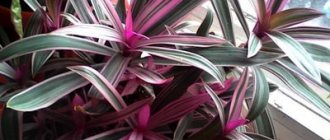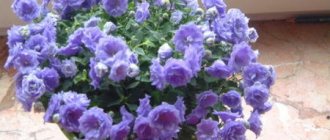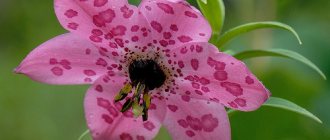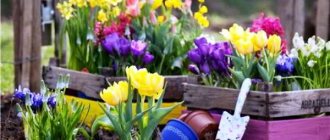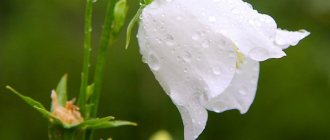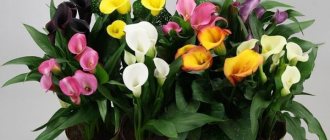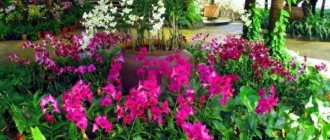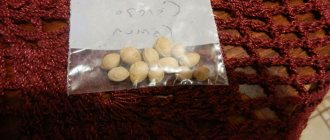Category: Landscape design of a personal plot, decorating a garden with your own hands, flower beds with your own hands Published 10/21/2012 · Comments: · Reading time: 2 min · Views: 3,869
Everyone has heard about the concept of bonsai - the Japanese art of growing a miniature tree in a bowl. But you can grow a very decorative bonsai tree in the garden; trees in our middle zone, such as maple, willow, apple tree, hawthorn, pine, spruce, juniper, etc., are perfect for this.
Garden bonsai or nivaki (as the Japanese call it) is an excellent element of landscape design, especially suitable for a Japanese-style garden or for a small area where everything needs to be placed very compactly.
Of course, it is easier to form a bonsai from deciduous trees, but pine creates that unique spirit of a Japanese garden, and also fills it with a pine aroma.
What is the art of bonsai
In Japan, the art of bonsai carries a sacred meaning. Represented by growing long-lived rocks in a small pot, on a tray or a piece of rock. Modern landscape design also involves the creation of an unusual garden on the site. Growing a bonsai at home from a pine tree is creating a miniature work of art with your own hands.
Important! Tree shaping is considered a meditative technique. The process calms and gives peace.
Bonsai always starts with a sketch. It is necessary to think in advance what the tree should look like. Then a sprout is selected or seeds are purchased, a root system is formed and planted in a flat container. It is noteworthy that it is impossible to grow pine at home in this way if the seedling or seeds are in poor health. Suitable for germination:
- pine;
- maple;
- oak;
- juniper;
- larch;
- spruce, etc.
You can create a little autumn at home with deciduous trees. This, in addition to maple, includes hornbeam, elm, beech, birch and even apple trees. But for beginners, it’s better to choose something simple and durable that forgives minor mistakes and inaccuracies. When the first tree takes root, you can try to implement a bonsai on the site from an exotic variety.
Pine Bonsai Styles
DIY money tree bonsai
The patterns on the basis of which miniature trees are classified are similar to the species diversity of plants in nature. However, they can be changed during the growing process in accordance with the author's plan. Styles characteristic of bonsai differ in the angle of the trunk, the placement of branches and their combination:
- the formal vertical style (tekkan) is distinguished by a straight trunk thickened downwards with a regular placement of branches;
- the informal vertical style (moyoga) is characterized by a curved trunk with decreasing bends towards the apex;
- the inclined style (shakkan) has a trunk inclined at an angle of 60-80 degrees, as if under the influence of a constant strong wind;
- The double trunk style (shokan), often found in nature, is characterized by a single crown, a common root system and different thicknesses of trunks. Traditionally, it is given to couples in love;
Strict minimalism
- Cascade bonsai (kengai) are usually grown in tall pots. It resembles a tree on the edge of a cliff, bent under the weight of snowfall or hail of stones. The branches are arranged horizontally to balance the composition;
- The semi-cascade style (khan-kengai) is found in natural conditions on the banks of reservoirs and in the mountains. The base of the trunk first grows upward, and then tilts to the side and down. The top is located at the level of the edge of the pot;
- literary (bohemian) style (bunzingi) with a bare vertical trunk and crown at the top symbolizes the tree’s struggle for a place in the sun.
Important! In addition to the most common ones, there are several other styles of pine bonsai.
Features of cultivation
Growing bonsai at home from seeds or pine seedlings is a touch of real art. If you follow the rules, you can form a tree without difficulty. Experienced gardeners claim that growing such a miracle is quite troublesome, but only at first. The difficulty lies in the following activities:
- Selection of planting material. It is important to choose not just viable raw materials, but also healthy, strong ones. All weak plants die in the first year.
- Preparation. It is important to choose the right pot, prepare the soil, and create conditions for germination and formation.
- Transfer. At a certain point, the bonsai pine tree is replanted at home for permanent growth. And any mistake will lead to the death of the plant.
And after the pine gets a little stronger and takes root in its current location, you can exhale a little. Growing a healthy and strong bonsai tree from seeds yourself at home is more difficult and expensive than from a purchased seedling. But some gardeners even dig up a ready-made “teenager” in the forest. However, it is bonsai from seeds that turns out to be the most beautiful and unusual. After all, it allows you to begin the formation of roots and crowns in the early stages.
Important! For planting by seeds, planting material can be found in the forest.
Ripened cones from a healthy tree are ideal. Collect up to 10 pieces, put them in a dry place and wait for the scales to open. But it is worth remembering that such seeds must be from the current year’s cone. Otherwise, the old seeds will not germinate.
More complex shapes
Pine trees look impressive, with some “balls” planted on top of others. To do this, during spring pruning, one (or several) “candles” from a bunch of shoots are left untouched. Next year it will be possible to plant a new “ball” or “bowl” on it. It is possible to create unusual trees and break symmetry by cutting out individual branches. But it is better to start bold pruning only after the mechanism of transformation of pine trees becomes clear. To do this, it is advisable to practice a simple technique - shortening all the “candles” to the same height.
Pine candles are shortened even on the lower branches
Near Kaliningrad, near one luxurious mansion, I saw a low pine tree with sparse branches that held green “bowls”. The asymmetry gave this tree a special chic.
What types are suitable
Modern gardeners are confident that they can grow bonsai at home from any variety of pine. But Japanese craftsmen choose only those that take root better and live longer than their coniferous “brothers”. From more than 100 varieties, choose four:
- Mountain pine. It grows quickly and allows you to form fancy shapes.
- Japanese black. It grows slowly but requires minimal care.
- Scots pine. An unpretentious and easy-to-use tree.
- Japanese white. An ideal tree for forming bonsai of any shape.
In Russia, it is better to use either Scots pine or mountain pine for cultivation. But other varieties are also suitable, but you will have to try very hard to create the right conditions. Temperature and humidity levels are especially important.
A useful video about the types of bonsai trees that can be grown at home from seeds or seedlings.
Are ship pines needed near the house?
The pine is perfectly formed. Any. Scots pine, or forest pine (Pinus sylvestris) is no exception. There are species, for example, black pine (Pinus nigra), which initially look impressive. It’s better not to “spoil” them, although you can work with them. I like ordinary forest pines with a wide, cone-shaped crown. Unfortunately, they are smart only at a young age. Then these trees are stretched and their trunks are exposed. I know of many cases when mature 20-40 meter tall pines became a serious problem and even a threat to people and buildings. Especially during strong squally winds. There are different ways to slow down rapid growth and give the crown an interesting shape. I chose the simplest, time-consuming, but very effective option.
Balls on pine branches in winter
How to plant correctly
If a gardener decides to grow bonsai at home from seeds or pine seedlings, he must be prepared to spend a lot of time on preparation. Planting material requires temporary maintenance in natural conditions. Therefore, after transplanting into a regular pot, the seedling is placed outside or on a balcony for several days. Be sure to adhere to the temperature regime that is suitable for a particular tree.
How to choose a container
Almost the main role is played by the pot. Choose a product made from natural raw materials. The plastic is immediately thrown aside. The pot should be up to 15 centimeters deep and have either a square or rectangular shape.
Important! In a deep round container, the root system will not form correctly and the bonsai pine will die during subsequent replanting.
Soil preparation rules
The first layer in the hill is gravel, then a layer of sand. If there are doubts about the health of the seedling or its survival, then the soil and sand can be calcined in advance. This will provoke the activation of local immunity and prevent contamination of the soil. When planting seeds, the sand is also calcined.
Seed preparation
If the seeds were not purchased, but collected with your own hands, then they are subjected to stratification. From 60 to 90 days they are kept at temperatures from zero to plus four degrees. In this case, the humidity level should be kept from 66 to 70%.
Important! These are ideal conditions to facilitate germination as the outer seed coat softens.
Landing rules
It is better to move seeds at the end of winter or in March. Internal metabolic processes are activated, which will ensure rapid germination. Make a groove or groove about 2-3 centimeters in the pot. The distance between seeds should be at least 3 centimeters. Cover with calcined sand and add liquid. Then the pot is covered with glass, but ventilated every day. If all the rules for preparing the material have been followed, then after sowing, young shoots will appear within two weeks.
Features of growing from seeds
Two weeks after planting, young shoots will appear. Then the glass needs to be removed and the pots moved to a well-lit place. If there is insufficient daylight, the plants will stretch upward too quickly. And it will be impossible to create a pine bonsai at home from such seedlings.
After 27-32 days, the seedlings will grow to five to seven centimeters. During this period, you can dive the root. Gardeners recommend carefully removing the plant and using a sharp knife to cut off the root where it has already lost its green tint. This approach allows you to get rid of the standard taproot system and stimulate the formation of a radial one. After the procedure, the cuttings are dipped into the root former for up to 16 hours.
Important! After aging, be sure to plant them in different pots. And the containers are put away in a shaded place for two months.
When young pines take root, they are transplanted into a container for continuous growth. But the depth of the pot should not exceed 15 centimeters. The soil is the same as that used for germinating cuttings. The main thing is to lay the entire root system in a horizontal plane. And already in this state they put it in a sunny place. And after 3 months, buds and needles will appear.
How to create favorable conditions
Experienced gardeners love to tinker with difficult plants. But for beginners it is better to stick to Scots pine, which adapts to the conditions of detention. But bonsai requires the creation of certain conditions. Otherwise you'll just end up with a tree in a pot. Some recommendations:
- in summer they are displayed in the garden or on the balcony;
- an adult plant loves sunny areas;
- Sprinkle regularly;
- maintain a temperature of five to ten degrees in winter.
It is noteworthy that a lack of sunlight can spoil a tree. A domestic pine bonsai will throw out needles that are too long. It looks ugly, untidy, and not aesthetically pleasing. Therefore, after the second transplant, the plant is kept in the sun as often and as long as possible. In warm weather it is permissible to display it in the garden.
The room where a pine bonsai, grown at home from seeds or seedlings, stands must be regularly ventilated. Regulate temperature and humidity levels to prevent rotting of the root system. The tree is regularly inspected for the presence of ailments and diseases.
Watering mode
Depending on the temperature and humidity level, a moderate watering regime is set up. On average, in the summer months, pine is watered once a week, and in winter it is reduced to a couple of times a month. This allows you to slow down the active growth of the tree. Every four days the bonsai is sprayed with a spray bottle.
It is worth setting up a separate watering regime for different types of wood. This applies to both common pine and deciduous trees. After all, there are certain species that require almost daily watering, while others only need a few bowls of water per week or month. Therefore, you should not form one bonsai from several types of trees, whose care differs from each other.
Application of fertilizers and fertilizing
Pine is an unpretentious plant, so careful selection of fertilizing is not required. Organic and mineral compounds are added alternately. The former often include compost or humus, and minerals include phosphorus, nitrogen or complex additives. From early spring, after cutting, feed is applied up to three times, and the same amount in the fall after the end of the rains.
You should not use ready-made complex fertilizers, since they are not needed to create pine bonsai at home. Excessively fertile soil can cause active growth, which will prevent the correct formation of the crown. Gardeners know that the first year is especially important. In subsequent years, it is necessary to maintain the health of the plant with regular feeding, but strictly according to the regime.
Formation
The most difficult period in tree care. It requires not only attentiveness, but also caution. Any aggressive actions can harm him. It is worth remembering the following rules if you want to grow pine bonsai from seeds or seedlings at home:
- give shape to the seedling, as lignified branches will break;
- shoots are pruned only in autumn;
- It is permissible to remove branches in early spring.
When forming a crown, you will need a wire that is wrapped around the branches. In the fall, they wrap it, give it the desired shape and leave it. If you do the procedure in the spring, then in the summer there may be scars on the bark. All unnecessary buds are pinched out, leaving only those that are included in the growth zone.
Important! The needles must be plucked out, otherwise the shoots will not receive the required amount of light.
If you want to give the tree a more decorative look, then cut off the needles in early spring. Subsequently, the pine will get used to it and will throw out shorter needles. The older the plant, the easier it will be to care for.
Transfer
If you do not regularly change the “place of residence” of the pine tree, the bonsai at home will quickly die. Even though the roots were immediately trimmed, the system still requires care. It is formed radially, which is not typical for pine. At the same time, transplanting in open ground and in pots is practically no different.
Every two years, pine requires replanting to form a normal root system. This is a must if you want to grow a healthy pine bonsai tree. This is the only way to grow bonsai from seeds or seedlings at home. The following rules are observed:
- do not shake off soil from the roots;
- the first transplant is carried out in the spring;
- When planting in a new pot, lay the root system horizontally.
A five-year-old plant can be replanted. Transplanting too early will harm the development of the root system.
Root system care
The most important thing in a bonsai tree is not its attractive appearance, but a properly formed root system. It directly determines how long the plant will live at home, how it will look and develop. That’s why Japanese masters advise:
- The third year is the most important. They constantly apply fertilizer, shelter from the cold, and water.
- In winter, the pots are insulated. Cover with mulch, but do not forget about ventilation.
- In the third or fourth year it is already possible to form a crown. Not forgetting to actively help the root system.
The root system requires careful care. Anyone who wants to grow pine bonsai at home from seeds or seedlings should know this.
Formation of bonsai from Scots pine
Scots pine can be an excellent basis for growing your own bonsai.
Conifers differ from deciduous trees in two stages of growth per year, which should be taken into account when creating a pine tree as a bonsai. The first wave of growth occurs in late spring and is expressed in the lengthening of branches. The second wave occurs at the end of August and is characterized by thickening of the branches. In just a few years you can grow a Scots pine bonsai with your own hands in a pot:
A Scots pine bonsai should have a strong and developed superficial root structure (nebari). Root growth is achieved over several growing seasons; as a result, the tree must firmly and confidently hold onto the ground.
Forming pine bonsai is about maintaining a balance between the creations of nature and man.
In order not to disturb the harmony, you can plant several bonsai from different types of trees in the garden, surrounding them with objects and plants that are similar in style and mood. Transforming an ordinary tree into a beautiful dwarf counterpart is a fun and interesting activity. Bonsai pine will become a real decoration of the garden with its own individual shapes and lines. Source
Types of bonsai
Depending on the root system, different trees can grow from the same planting material. Popular types of bonsai include:
- Daiza - trees more than 1.2 meters high;
- Mame are the smallest plants, not exceeding 20 cm;
- Sekhin - reach up to 25-27 cm;
- Tyukhin - all trees up to 1.2 meters;
- Kifu - average height from 25 to 40 cm.
Bonsai can also be single-trunked or multi-trunked, evergreen or with deciduous leaves. It’s not worth forming a crown “from your head”. After all, once the plant becomes lignified, it will no longer be possible to change it. Therefore, if you want to grow pine bonsai at home, it is better to look at the differences in crowns in specialized literature. The subtleties of care include:
- Protect the young plant from drafts and excess moisture;
- Trim the roots before planting or replanting;
- Create a moderate watering regime;
- Fertilize regularly;
- Sanitary pruning is carried out annually.
Every gardener can grow bonsai at home from pine trees. This can be done both in a pot and in open ground. The main thing is to follow the rules of planting and transplanting, to create ideal conditions. For beginners, it is better to stick to more unpretentious varieties, but for experienced gardeners there are no restrictions. You can grow bonsai at home not only from pine, but also from other trees.
Useful video about types of bonsai that can be grown at home.
How to grow Bonsai pine at home?
Bonsai-style coniferous trees look great both in the interior and in the garden. How to grow such beauty yourself? It’s worth noting right away that pine does not grow very well in an apartment, it loves fresh air, and needs a cold winter. It is much easier to start growing a miniature coniferous tree in the garden.
The main task of a gardener is regular pruning, proper care and crown formation. If all these operations are performed correctly, you will get a delightful tree that will attract the attention of all your guests and delight your family. The main thing is to give the tree time to grow and form the desired appearance. This usually takes 6-7 years.
The main signs of a proper bonsai:
Suitable species
To obtain a bonsai, a familiar pine tree from a neighboring copse will be suitable. You can also purchase a seedling from a nursery. In this case, it is advisable to choose a species that is exotic for Russia, for example:
Work with these types is based on a general principle. But the most unpretentious and pliable option, of course, is Scots pine. Beginner gardeners are recommended to start with it.
Ordinary
This is a very common tree in our country. You will find it in any forest, on a hill and in a lowland, in the southern and northern regions. It grows everywhere. Its main features:
Mountain
This species originates from Central Europe. Its main characteristics:
Japanese white
This species is very different from the usual pine from the Russian forest. The plant, originally from Japan, has a beautiful pine color. Its features:
How to form from one dug out in the forest?
A strong young tree from the forest is suitable for forming a bonsai. You can dig up a young pine tree in the forest and transplant it to your garden plot. It is very good if the seedling is initially slightly curved, but even from an upright one it will be possible to create a real masterpiece.
Your task is not to let the plant “grow,” but to make it grow slowly. The main ways to solve this problem:
Style selection
It is necessary at the very first stage to decide on the style of bonsai. Chaotic pruning is harmful and can even destroy the plant. You need to decide in advance what shape you want to give the tree. In the classical art of bonsai, there are several popular styles.
You can take one of them as an example:
Planting in the garden in open ground
A healthy seedling will easily tolerate transplantation; your task is to choose a beautiful, promising shoot that will actively develop and take shape in accordance with your plan.
Drainage is considered a prerequisite. It is constructed from expanded clay, broken clay shards, and gravel.
TOP 5 tips on how to grow pine bonsai in open ground
A true classic bonsai should look like an old tree, even if it itself is relatively young. Therefore, in landscape design it is often used to improve the area. Germination and care are not much different from growing at home, but there are some differences:
- Planting material. It is necessary to choose a seedling of a variety that will winter in open ground and is not afraid of severe frosts. The higher the level of adaptation, the better.
- Landing rules. As close as possible to create a pine bonsai in a pot. Therefore, the central part of the rhizome is also truncated. A concrete slab is laid at the bottom so that the root system develops radially.
- Selection of soil. Both light natural soil and infertile soil are suitable. Do not forget about trimming the lateral roots with a shovel from the fourth year of life.
- Formation. They are also wrapped with wire, bent and pulled so that the branches fall down.
- Further care. Fertilize regularly and sprinkling on dry days. Normalize the watering regime.
Scots pine is an ideal material for growing bonsai at home from seeds or seedlings. The main thing to consider is that it has two active stages of growth per year, the rest of the time it is at rest.
Description and main types
Miniature trees using the bonsai technique are reproductions of plants found in nature. In Japan, growing bonsai is a holistic worldview that combines spirituality and the physical side. In Russia, miniature trees appeared quite recently. Undemanding pine is perfect for creating fancy shapes.
Landing ideas
To grow such a tree with your own hands, an amateur just needs patience and knowledge of how to make a bonsai from a pine tree. The tree is formed artificially according to special rules:
- the trunk should be strong and impressive with a compacted support and a rhizome protruding from the soil;
- There are usually few branches so that they combine with each other, giving the tree its unique appearance;
- They try to give the pine the shape of one of 15 classic samples.
Niwaki
The outline of a pine bonsai should resemble a plant growing in nature. The most important task when growing a tree is to slow down its growth. For growing bonsai, 4 varieties of pine are usually used.
Japanese black
Pinus thunbergii is most often taken as the basis for cultivating a tiny plant due to the uniqueness of its bark, crown density, slow growth, endurance and unpretentiousness. The tree can easily withstand very harsh conditions and can survive even on rocky soil.
Classic plant
Japanese white
Pinus parviflora can be single-stemmed or multi-stemmed. Over time, the branches acquire a grayish-blue tint, and the delicate thin needles with curved tips justify the specific name of the tree. This species is very popular in garden plots.
Mountain
Not too capricious to grow, mountain pine bonsai (mugus) with favorable care is distinguished by a dense crown that allows it to be shaped in a variety of styles. The bark of the young tree is purple in color, and the pine blooms with light purple inflorescences.
Ordinary
Parviflora is the simplest option for domestic lovers. It does not require special conditions, it can easily be formed into the desired appearance. Scots pine bonsai is distinguished by paired yellowish-green needles and scaly brown-reddish bark. It usually has low hanging branches, giving it a graceful shape.
Styles


